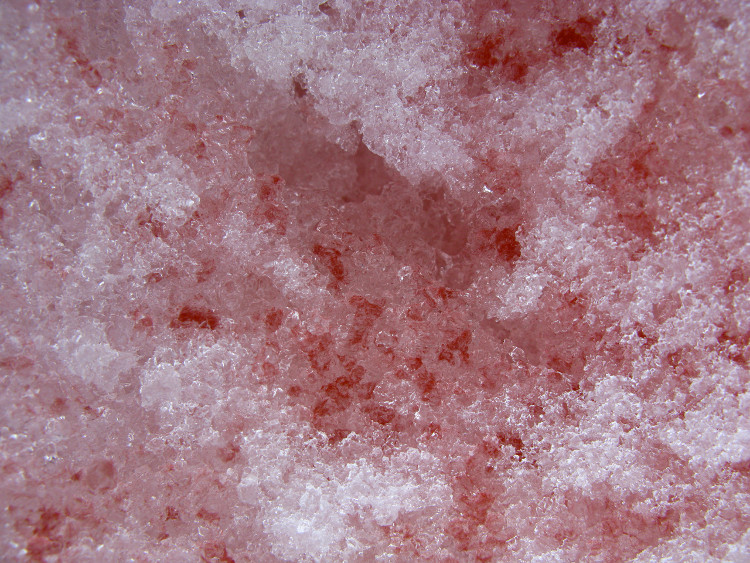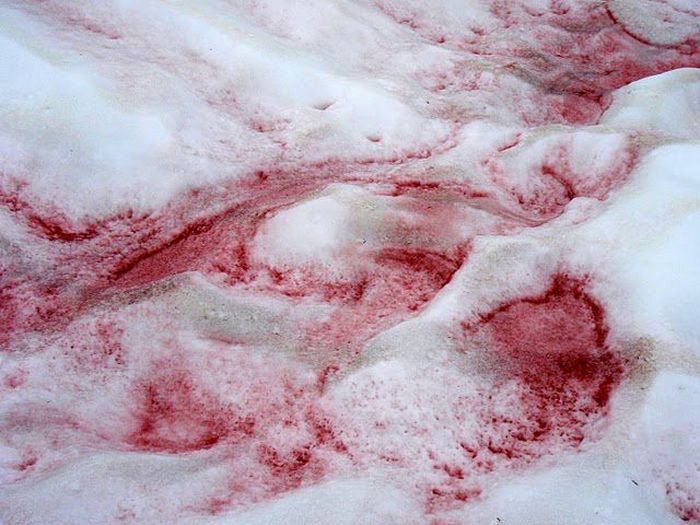'Strawberry snow' - Nice is beautiful but equally harmful
Experts say, "snow strawberry" can reduce the reflective performance by 13%, causing a higher melting rate of ice.
Have you ever heard "pink snow", "snow strawberry" or "watermelon snow" yet? Is that a dish? Please, no - that's the name of a real snow, light pink, spongy, often appear in the mountains with altitudes between 3,000 - 3,600m and in the North Pole.
"Strawberry snow", "watermelon snow" also has another name "snow algae" - the snow algae is because the red in snow is formed by the tiny algae Chlamydomonas grows under the snow.

As the weather gets warmer, the amount of light increases, the snow melts and many nutrients help them sprout and appear pink patches under the snow.
According to the researchers, inside Chlamydomonas algae contain green chlorophyll, but also contain a number of carotenoids with red pigment. Carotenoids are a type of organic pigment that protects the algae from ultraviolet rays from the Sun.
However, a new study shows that the appearance of pink snow in the Arctic makes them absorb more heat, increasing climate change.
To draw this conclusion, experts conducted tests with 40 samples of snow collected from 21 regional glaciers, including Greenland, Iceland, Svalbard, and Sweden.
The bacteria in snow algae are also collected and studied, in terms of diversity and pigmentation. Experts say they affect the yield of reflections (Albedo). This term indicates the ability of a surface to reflect on sunlight.

Carotenoids are a type of organic pigment that protects the algae from ultraviolet rays from the Sun.
Accordingly, during the warm season, the snow algae blooms can reduce the reflective performance by 13%, causing a higher melting rate of ice.
Research author - Stefanie Lutz, PhD at the German Center for Geological Sciences GFZ and at the University of Leeds shared:
" Albedo reflectance yields are extremely important and need to be carefully considered in future climate models . The appearance of algae in ice at a high level will inadvertently cause the rate of ice melting more and more quickly."
The research is published in Nature Communications.
- Get to know Dalat strawberry and Chinese strawberry
- Discover amazing snow ice phenomena
- Stun with exotic blue strawberries
- Strawberry planting technology harvested all year round
- Strawberry tonic
- The Son Peak is like the European sky when the snow season returns
- Why should you eat strawberries?
- Nice photo: The snowy owl hunting moment
- Extract from this fruit can fight deadly bacteria
- Robots help farmers pick strawberries
- Have black, yellow, red, blue snows?
- Found the new 'strawberry' species
 Is the magnetic North Pole shift dangerous to humanity?
Is the magnetic North Pole shift dangerous to humanity? Washington legalizes the recycling of human bodies into fertilizer
Washington legalizes the recycling of human bodies into fertilizer Lightning stone - the mysterious guest
Lightning stone - the mysterious guest Stunned by the mysterious sunset, strange appearance
Stunned by the mysterious sunset, strange appearance